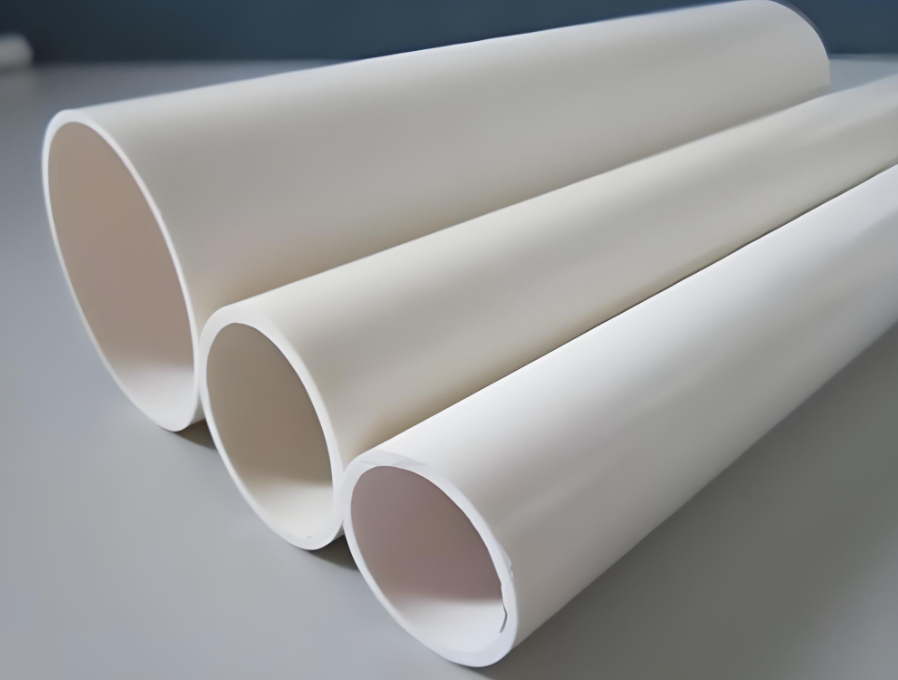
NPS (Nominal Pipe Size)
Explanation: NPS is a standard way to refer to the size of a pipe. It's not the exact inner or outer diameter. For example, a 1 - inch NPS PVC pipe doesn't have an actual diameter of 1 inch. The NPS is used mainly for identification and to match pipes with fittings. The system simplifies the process of selecting the right components for a plumbing or piping project. In the case of PVC pipes, NPS values range from very small sizes for specific applications (like 1/8 - inch) to larger sizes used in industrial or heavy - duty settings (up to several feet in diameter).
Application: When you're looking at PVC pipe fittings or valves, the NPS is a crucial factor in ensuring compatibility. For instance, if you have a 3/4 - inch NPS PVC pipe, you need to use fittings that are also labeled as 3/4 - inch NPS to ensure a proper connection. This abbreviation is commonly found on product labels, technical specifications, and installation manuals.
OD (Outer Diameter)
Explanation: OD refers to the measurement of the outside of the pipe. It's a vital dimension when it comes to fitting pipes together. The outer diameter is a precise measurement, and different PVC pipe schedules (such as Schedule 40 and Schedule 80) of the same nominal size can have different outer diameters. For example, a 1 - inch nominal PVC pipe of Schedule 40 has a different OD than a 1 - inch nominal PVC pipe of Schedule 80. Manufacturers provide the OD measurement to ensure accurate fitting of couplings, elbows, and other pipe - joining components.
Application: When selecting pipe fittings like couplings or unions, you need to match the inner diameter of the fitting with the outer diameter of the pipe. For example, if a PVC pipe has an OD of 1.315 inches, you need to choose a coupling with an inner diameter that closely matches this measurement to create a leak - proof connection. The OD measurement is also important in determining the space requirements for installing the pipes in a given area.
ID (Inner Diameter)
Explanation: The ID is the measurement of the inside of the pipe. It directly affects the flow capacity of the pipe. The ID is calculated by subtracting twice the wall thickness from the outer diameter. For example, for a Schedule 40 PVC pipe with a given outer diameter, you can determine the inner diameter based on the known wall thickness of that schedule. A larger inner diameter allows more fluid to flow through the pipe at a given velocity.
Application: In applications such as plumbing and irrigation, the ID is a crucial factor for calculating the flow rate of water or other fluids. The formula for calculating the cross - sectional area of the pipe (A = π*(ID/2)^2) is used to estimate the flow rate, given the velocity of the fluid. When designing a water supply or drainage system, the ID helps in determining the appropriate pipe size to meet the required flow requirements.
Schedule (e.g., Schedule 40, Schedule 80)
Explanation: The schedule number of a PVC pipe refers to its wall thickness. Schedule 40 pipes have a standard wall thickness and are suitable for most general - purpose applications such as residential plumbing and light - duty drainage. Schedule 80 pipes have a thicker wall and can withstand higher pressures. The schedule affects the overall strength and pressure - handling capacity of the pipe. It's determined during the manufacturing process and is an important specification to consider when choosing a PVC pipe for a particular application.
Application: If you're working on a high - pressure water supply system, like in a high - rise building, you might need to use Schedule 80 PVC pipes to ensure the pipes can handle the increased pressure. On the other hand, for a simple garden irrigation system, Schedule 40 pipes would likely be sufficient and more cost - effective. The schedule abbreviation is typically found on the pipe itself, along with other markings such as the nominal size and the manufacturer's name.
Copyright Reserved 2025 SHENZHEN CHINA PIPE SUPPLIES
Fuyuan building NO.460 FanShen Road BaoAn District SHENZHEN City, GUANGDONG Prov. CHINA 518000

 +8617727596190
+8617727596190